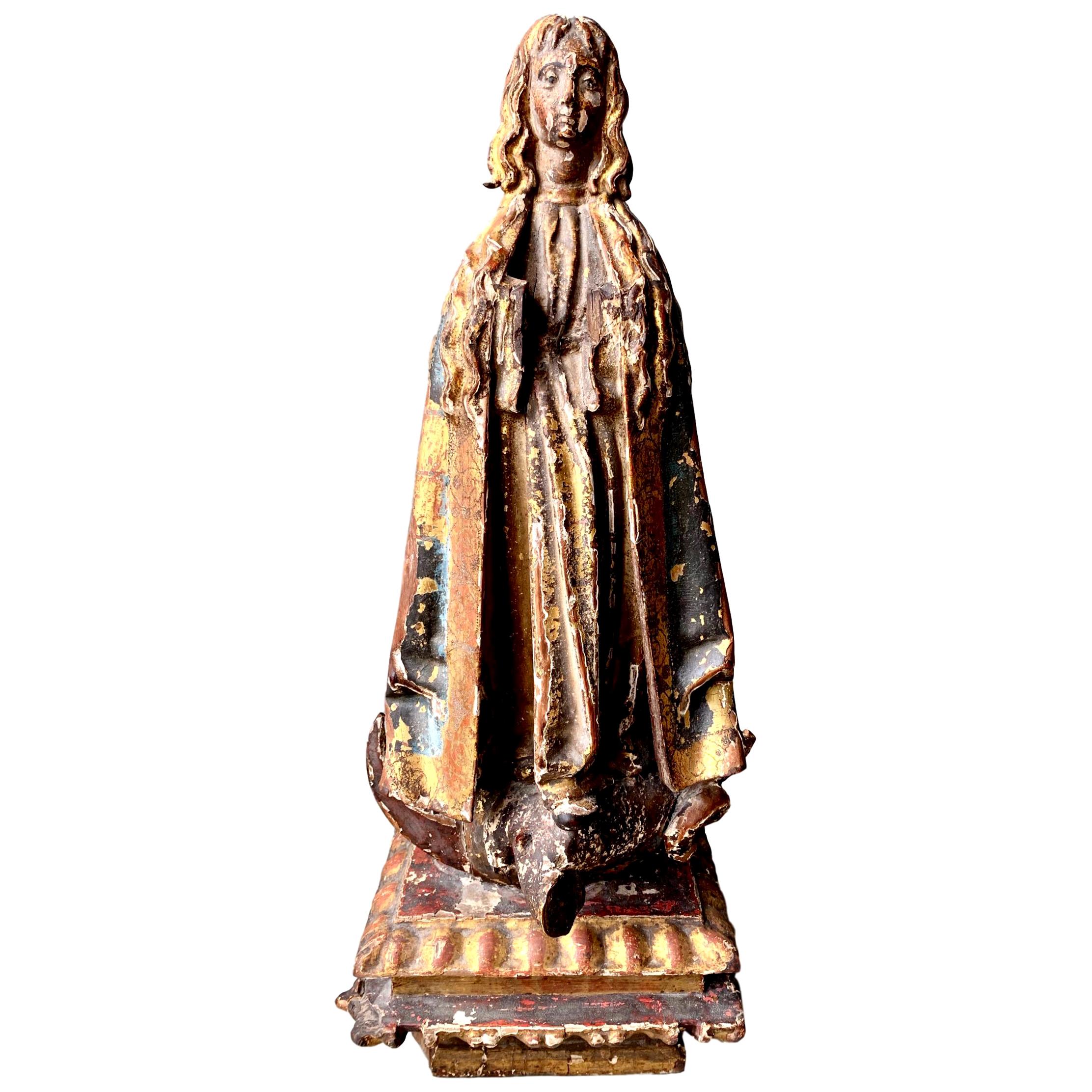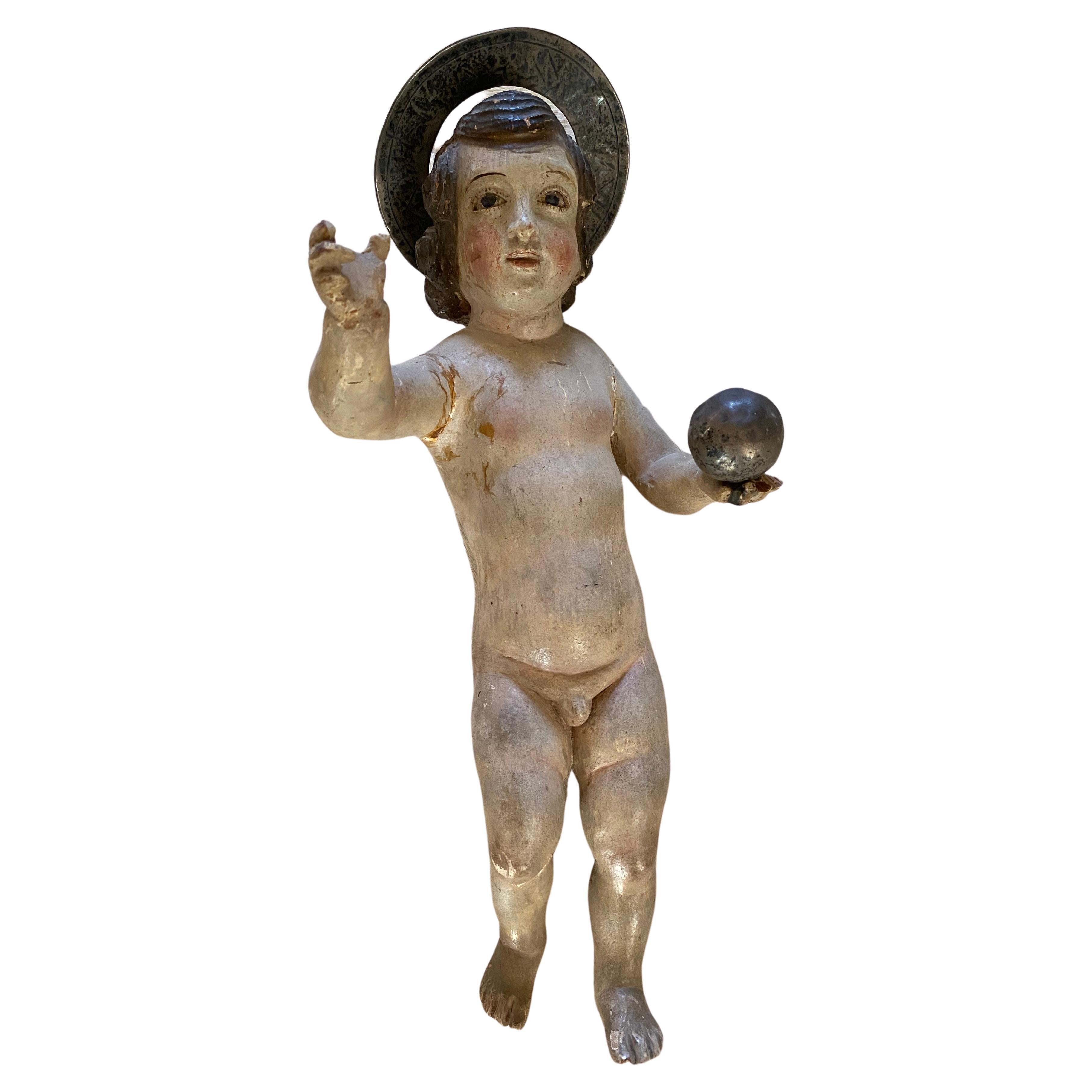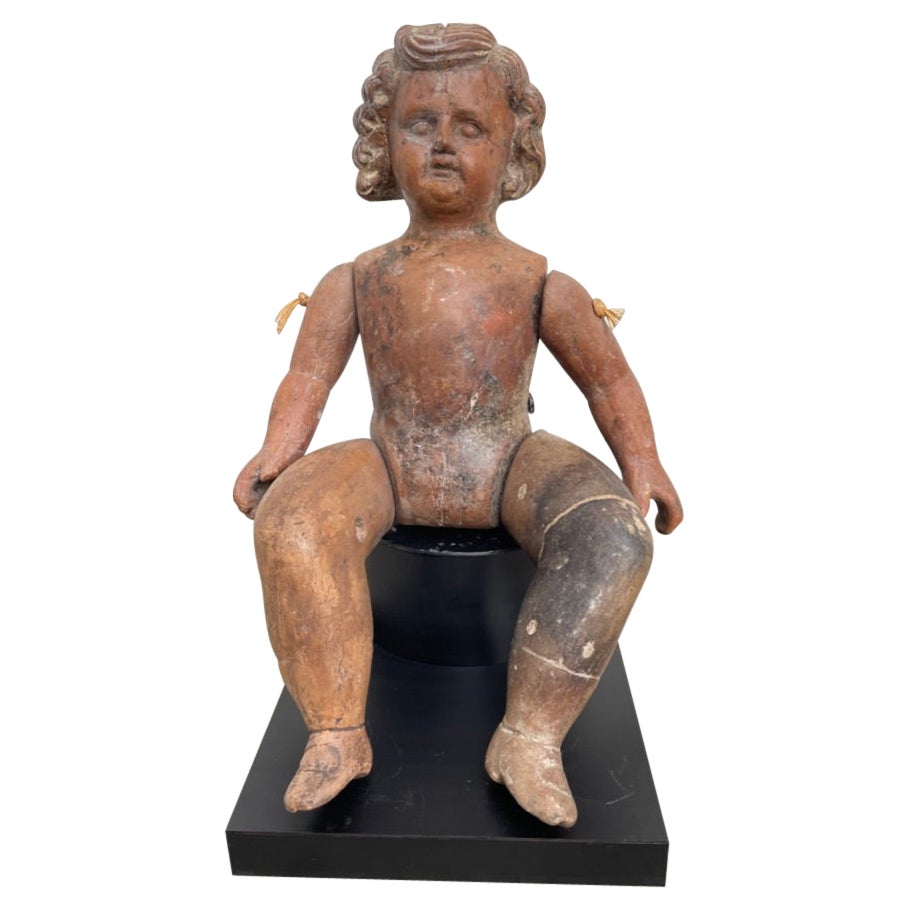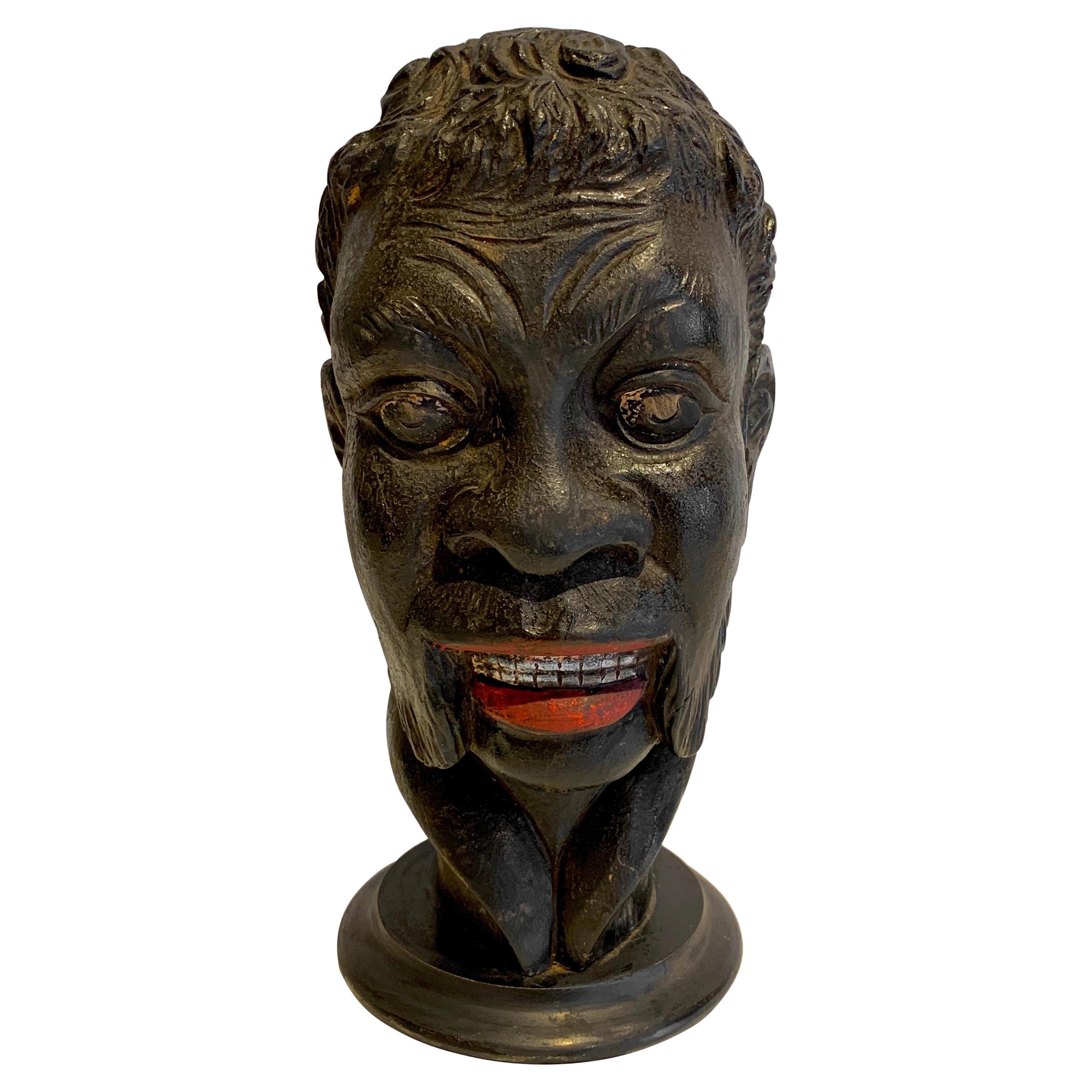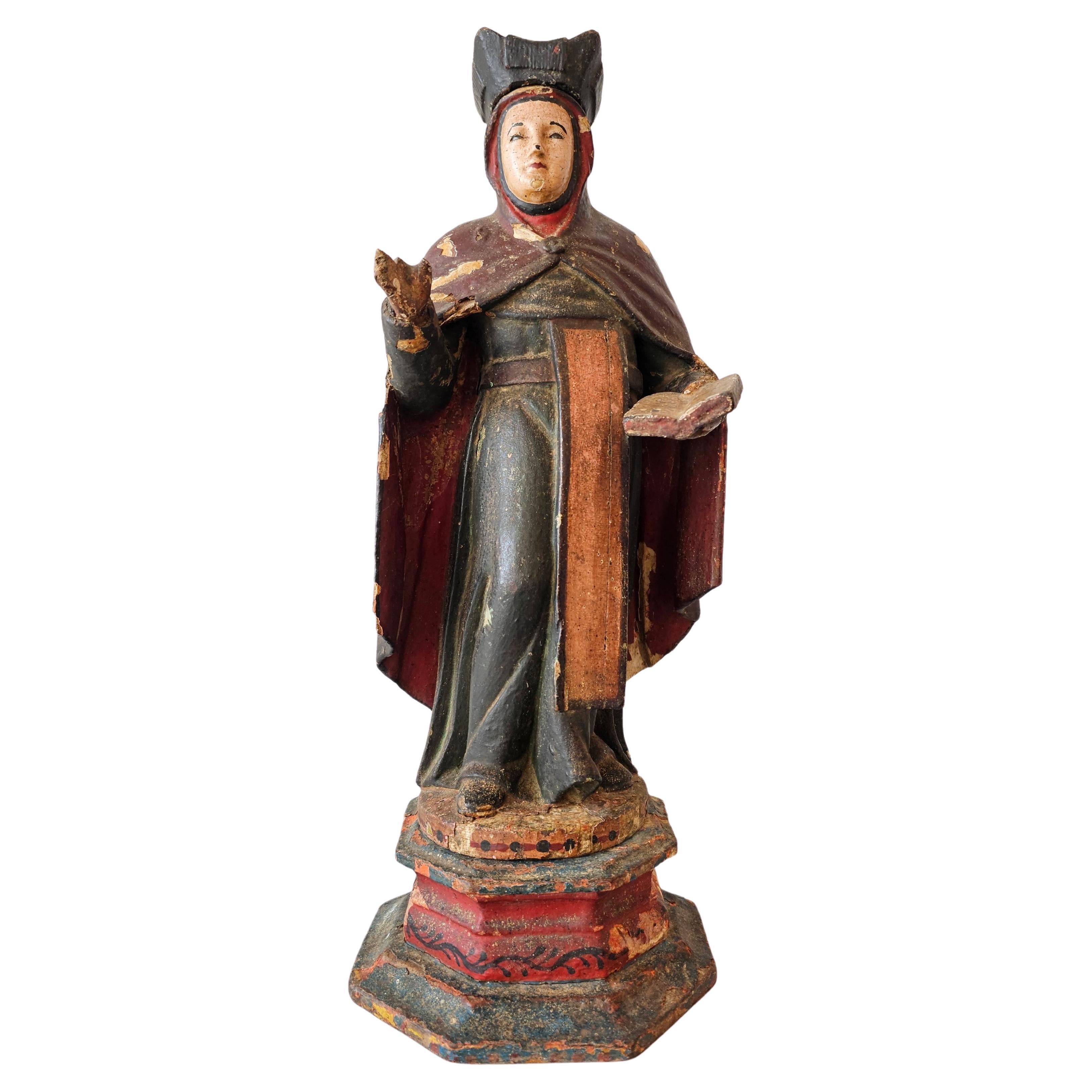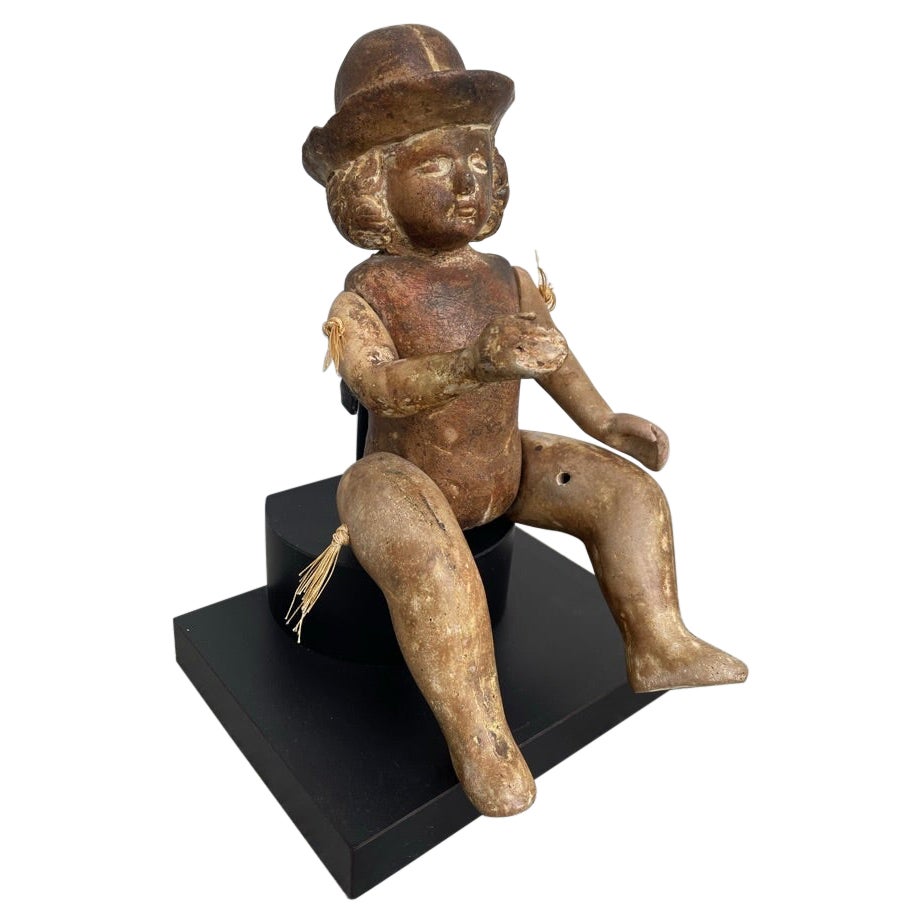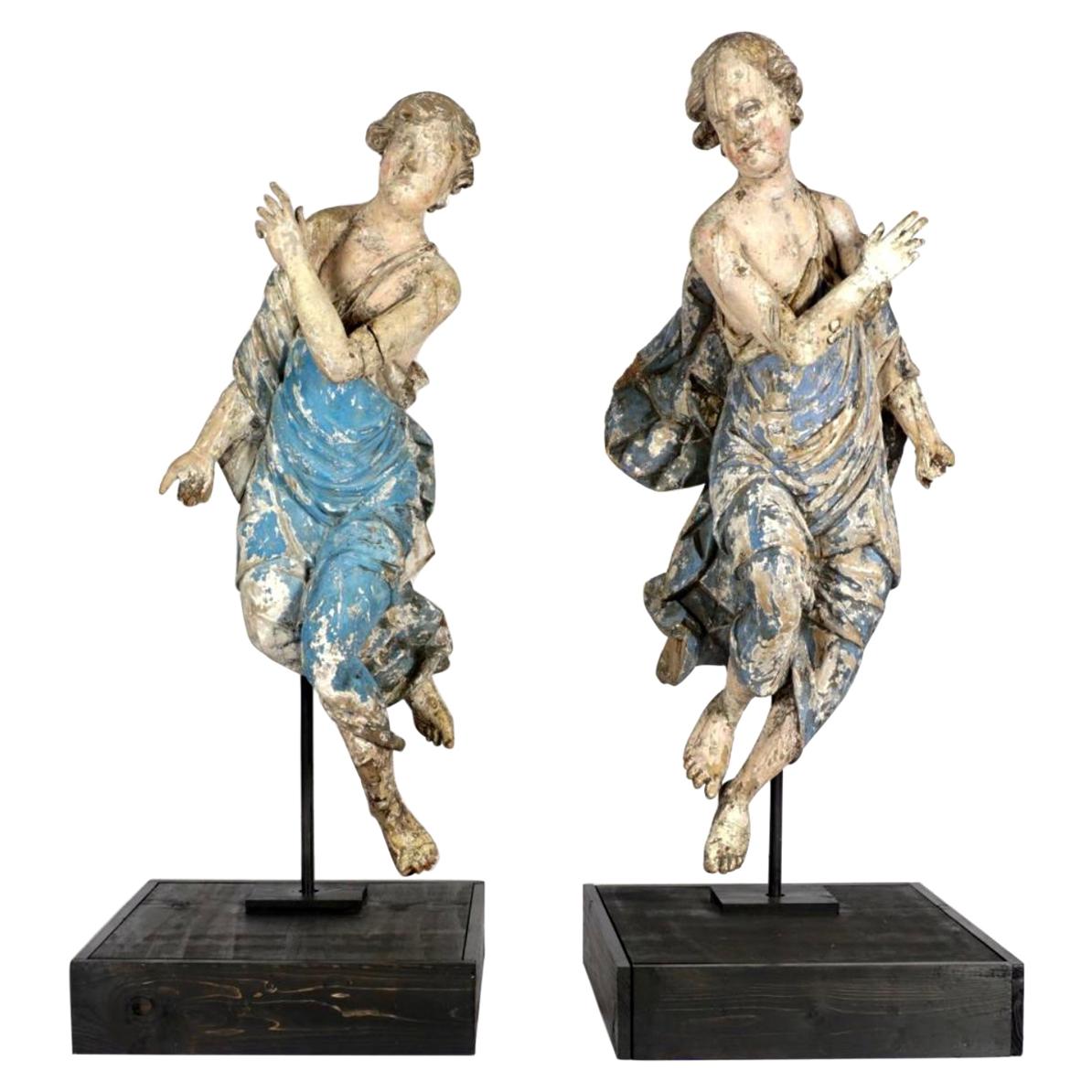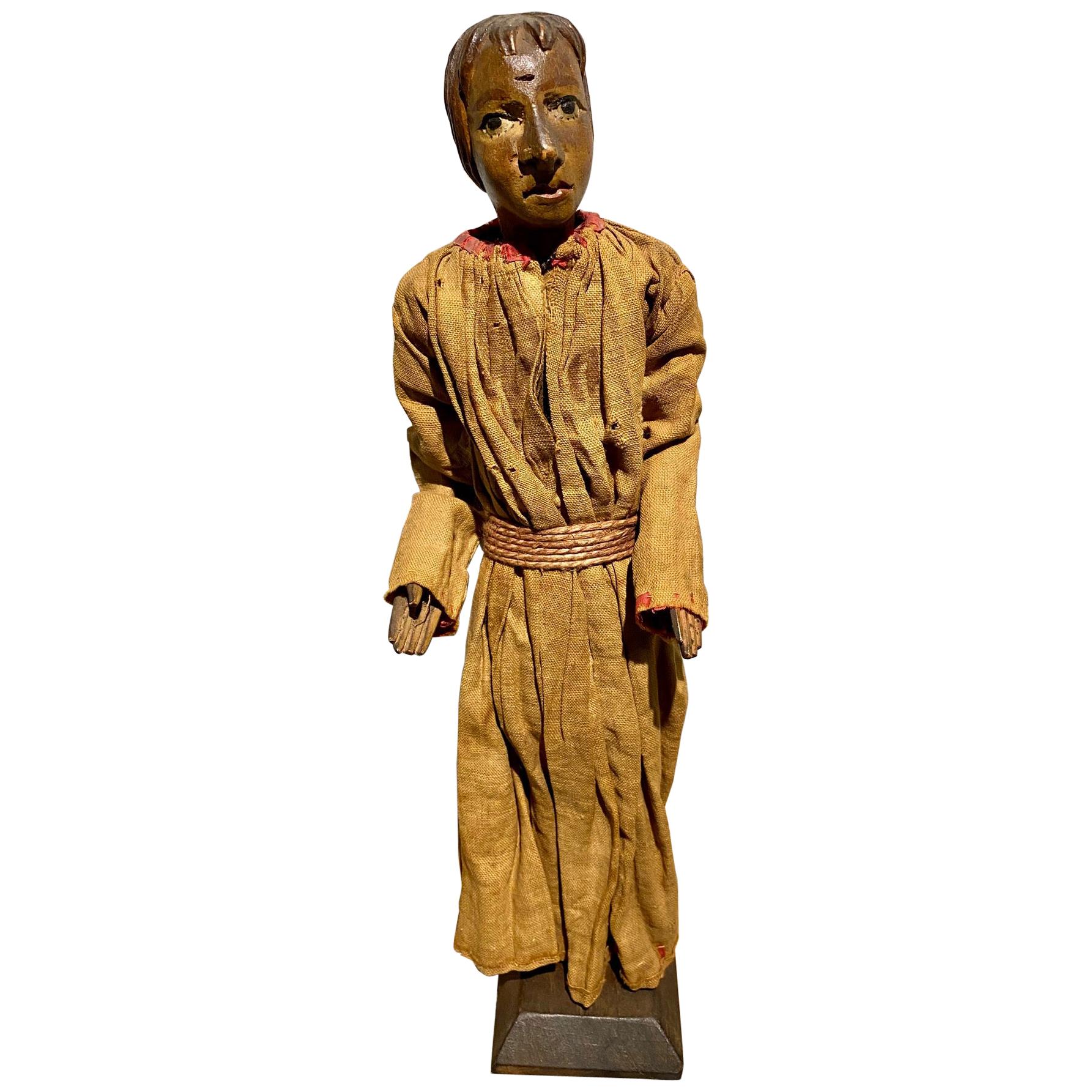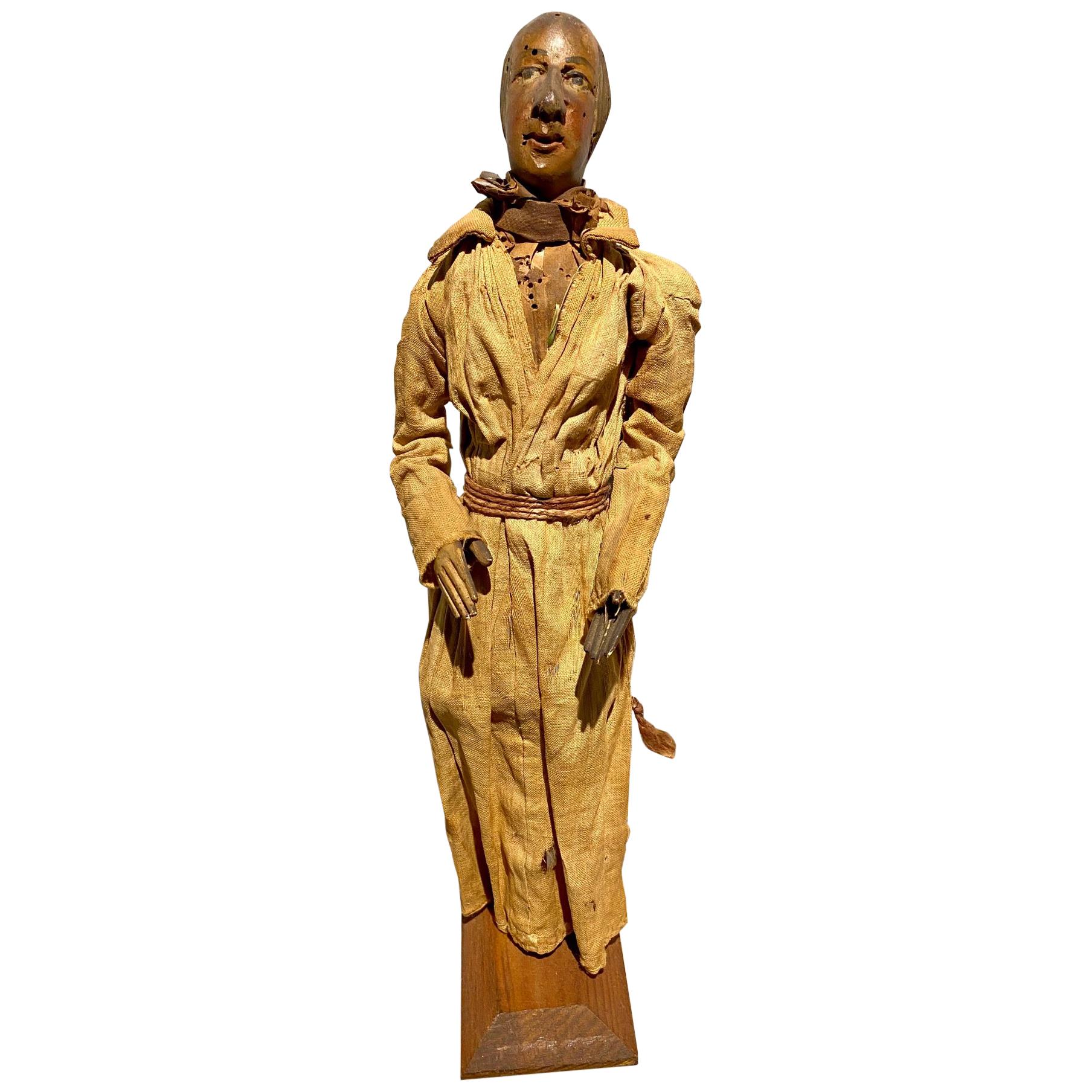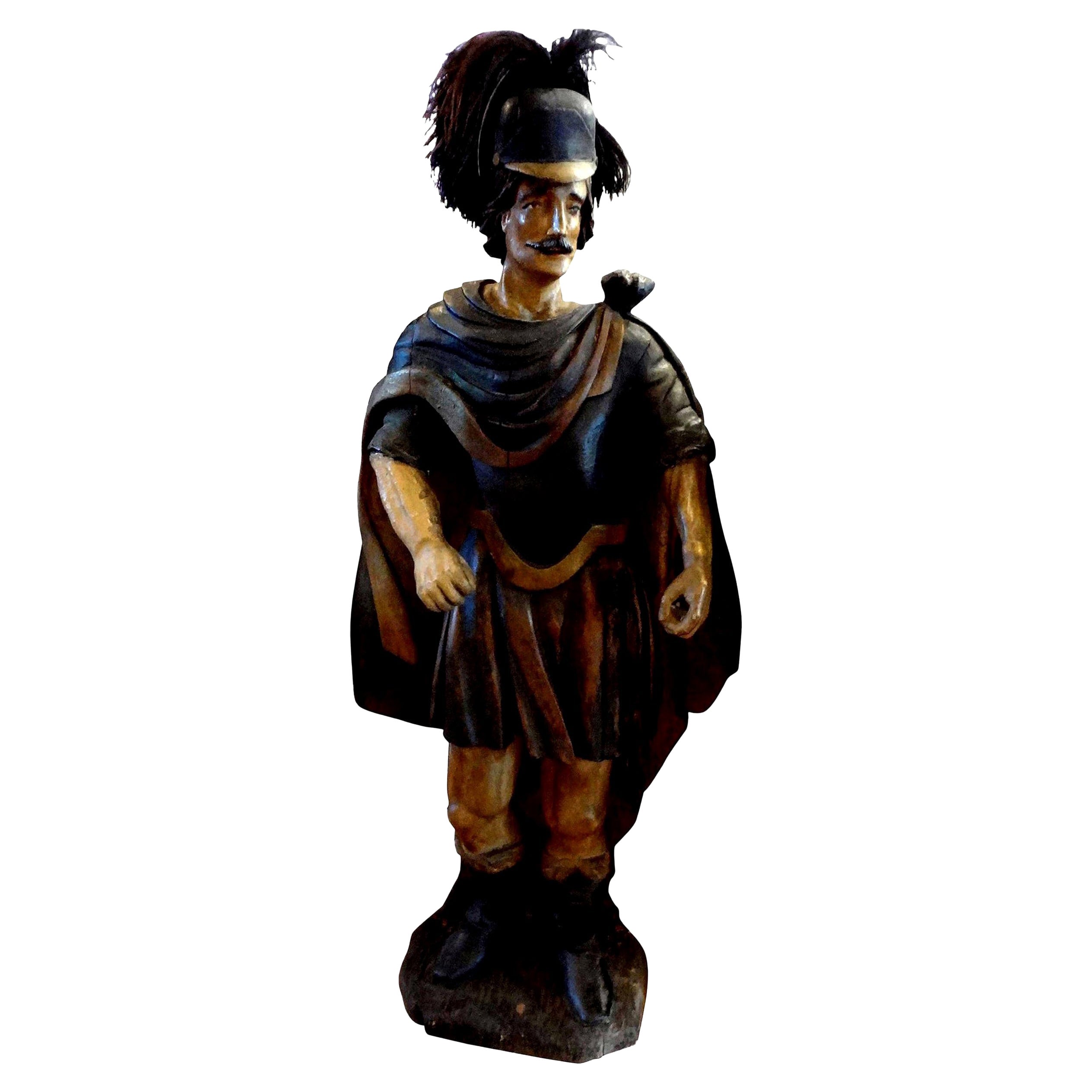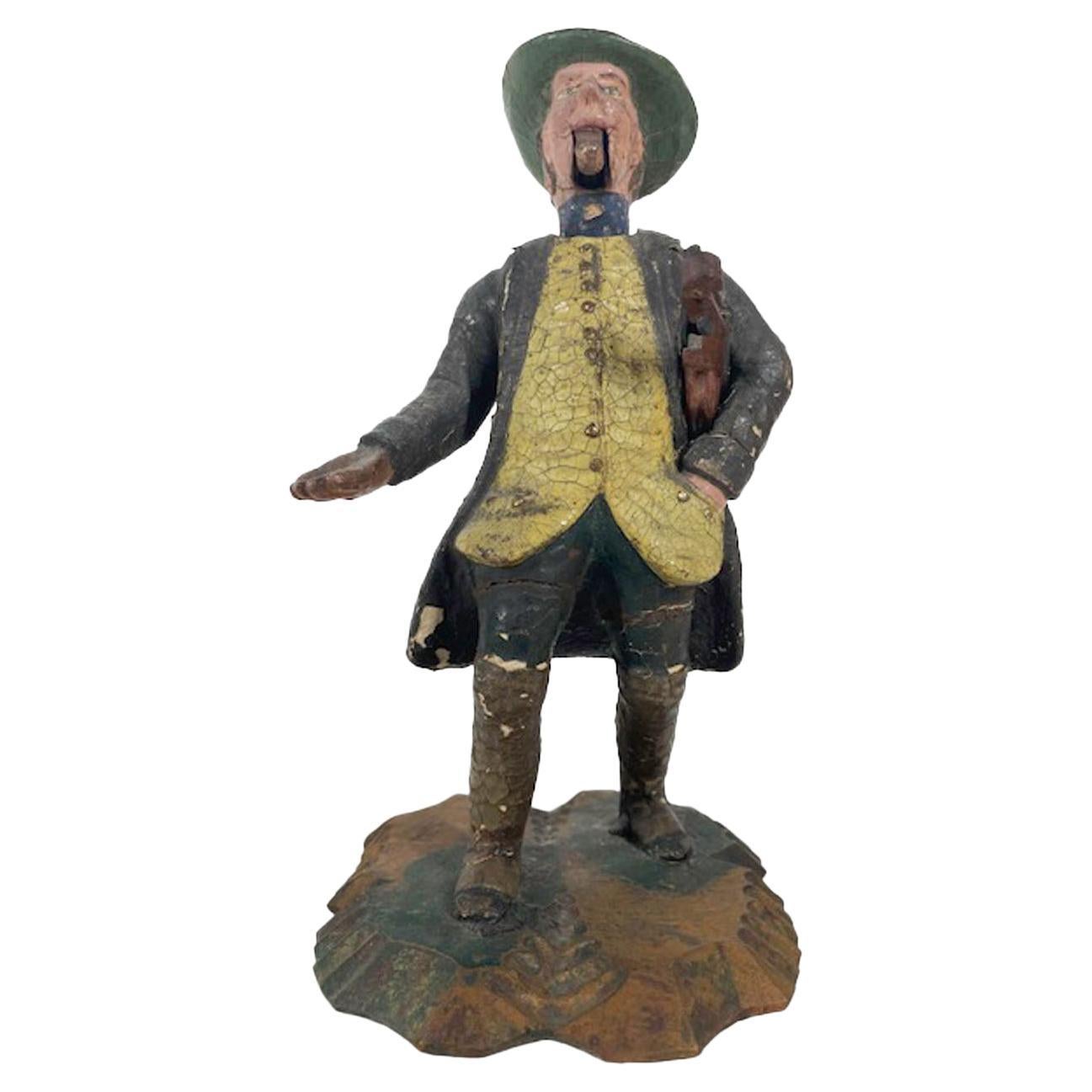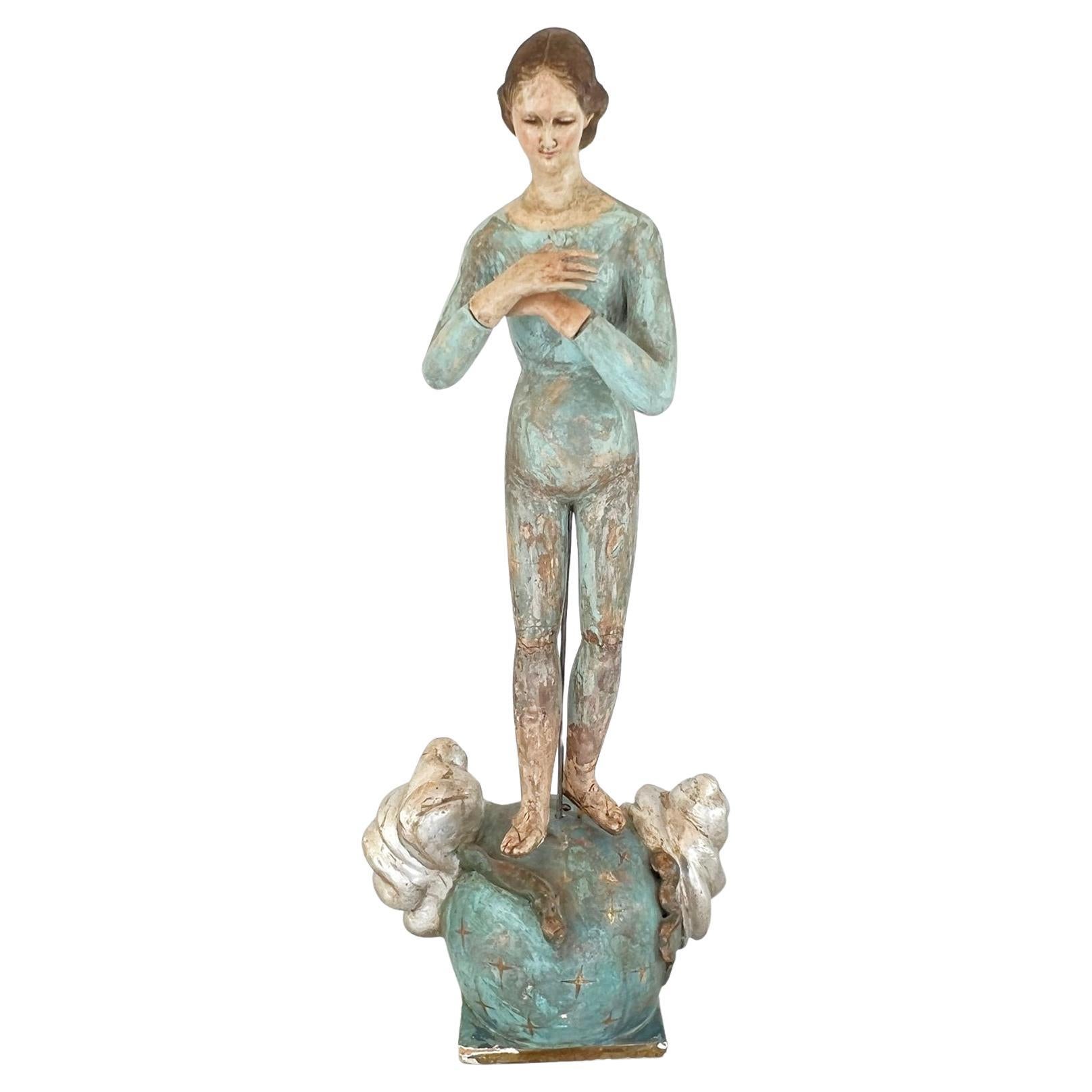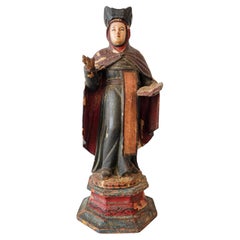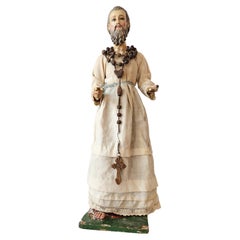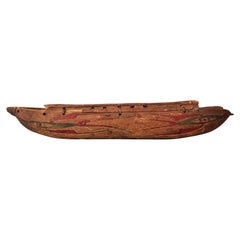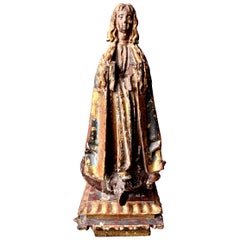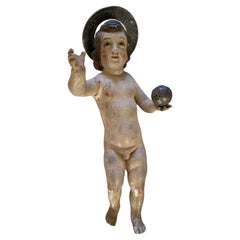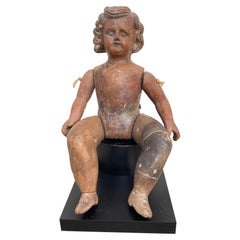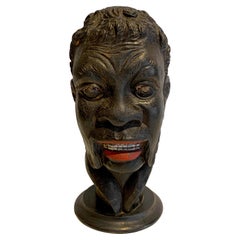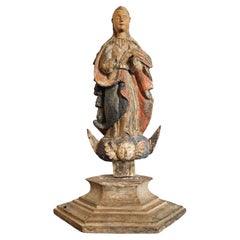
Baroque Period European Antique Carved Polychrome Santo Altar Figure
View Similar Items
Want more images or videos?
Request additional images or videos from the seller
1 of 21
Baroque Period European Antique Carved Polychrome Santo Altar Figure
$995List Price
About the Item
- Dimensions:Height: 13 in (33.02 cm)Width: 8.25 in (20.96 cm)Depth: 5.25 in (13.34 cm)
- Style:Baroque (Of the Period)
- Materials and Techniques:
- Place of Origin:
- Period:
- Date of Manufacture:circa 1700
- Condition:Wear consistent with age and use. Minor losses. Minor fading. Great original unrestored antique condition with highly desirable heavily worn distressed patina, remnants of pigment remain, scattered chippy paint losses, loss to hands, later / unassociated antique base.
- Seller Location:Forney, TX
- Reference Number:1stDibs: LU5977233645972
About the Seller
4.8
Platinum Seller
Premium sellers with a 4.7+ rating and 24-hour response times
Established in 2013
1stDibs seller since 2021
296 sales on 1stDibs
Authenticity Guarantee
In the unlikely event there’s an issue with an item’s authenticity, contact us within 1 year for a full refund. DetailsMoney-Back Guarantee
If your item is not as described, is damaged in transit, or does not arrive, contact us within 7 days for a full refund. Details24-Hour Cancellation
You have a 24-hour grace period in which to reconsider your purchase, with no questions asked.Vetted Professional Sellers
Our world-class sellers must adhere to strict standards for service and quality, maintaining the integrity of our listings.Price-Match Guarantee
If you find that a seller listed the same item for a lower price elsewhere, we’ll match it.Trusted Global Delivery
Our best-in-class carrier network provides specialized shipping options worldwide, including custom delivery.More From This Seller
View All18th/19th Century Spanish Colonial Carved Polychrome Wood Santo Altar Sculpture
Located in Forney, TX
A most impressive antique Spanish Colonial hand carved polychromed wood Santo Catholic church altar figure. circa 1800
Hand-crafted in the late 18th / early 19th century, exceptionally executed intricate detailing, the large scale antique religious sculpture depicting the female Saint Teresa of Avila, polychrome painted gesso over finely sculpted wood, inset glass eyes, shown in Carmelite nun habit...
Category
Antique Late 18th Century Spanish Colonial Sculptures and Carvings
Materials
Gesso, Wood, Paint
17th/18th Century Baroque Period Carved Polychrome Santo Altar Statue
Located in Forney, TX
A scarce Baroque period Spanish or Italian hand carved polychrome painted wood Santo sculpture with inset colored glass eyes, original white robe garb and later wood rosary.
Intrica...
Category
Antique Early 18th Century European Baroque Religious Items
Materials
Gesso, Wood, Paint
Antique Spanish Colonial Hispano-Philippine Carved Polychrome Santo Altar Figure
Located in Forney, TX
A scarce Spanish Colonial Hispano-Philippine hand carved santo altar figure sculpture. circa 1810
Handmade by Spanish settlers / colonists in the Philippines, late 18th / early 19th...
Category
Antique Early 19th Century Philippine Spanish Colonial Religious Items
Materials
Wood, Paint
Antique Native American Indigenous Peoples Carved Polychrome Canoe Model
Located in Forney, TX
An exceptionally rare antique Native American / Indigenous Peoples hand carved and painted wooden dugout canoe model, dating to the early 20th century or earlier, likely Pacific Nort...
Category
Early 20th Century North American Native American Sculptures and Carvings
Materials
Twine, Wood, Paint
18th/19th Century Italian Baroque Silvered Metal Altar Monstrance Reliquary
Located in Forney, TX
A stunning antique Italian Baroque style silvered metal gilded wood monstrance reliquary. circa 1770-1820
Handmade in Italy in the late 18th / early 19th century, commissioned by the church to display an important religious relic, sculptural painted wood form, mounted with decorative silver repousse metal facing, open oval window where the philatory relic was once housed, rising on a gold gilt painted shaped plinth base.
Dimensions: (approx)
17" High, 8" Wide, 5" Deep, 1.25lbs
History:
Reliquaries (also referred to as a shrine or châsse in French), are containers used to protect and display relics. A portable reliquary may be called a fereter, and a chapel in which it is housed a feretory. A monstrance, also known as an ostensorium (or an ostensory), is a vessel used in Roman Catholic, Old Catholic, High Church Lutheran and Anglican churches for the display on an altar of some object of piety, such as the consecrated Eucharistic host during Eucharistic adoration or Benediction of the Blessed Sacrament. It is also used as reliquary for the public display of relics of some saints.
The use of reliquaries became an important part of Christian practices from at least the 4th century, initially in the Eastern Churches, which adopted the practice of moving and dividing the bodies of saints much earlier than the West, probably in part because the new capital of Constantinople, unlike Rome, lacked buried saints. Relics are venerated in the Oriental Orthodox, Eastern Orthodox, Roman Catholic and some Anglican Churches. Reliquaries provide a means of protecting and displaying relics. While frequently taking the form of caskets, they range in size from simple pendants or rings to very elaborate ossuaries.
The relics were enshrined in containers crafted of or covered with gold, silver, gems, and enamel. These objects constituted a important form of artistic production across Europe and Byzantium throughout the Middle Ages.
Many were designed with portability in mind, often being exhibited in public or carried in procession on the saint's feast day or on other holy days. Pilgrimages often centered on the veneration of relics. The faithful often venerate relics by bowing before the reliquary or kissing it; those churches which observe the veneration of relics distinguish between the honor given to the saints and the worship that is due to God alone.
Sixteenth-century reformers such as Martin Luther opposed the use of relics since many had no proof of historical authenticity and objected to a cult of saints. Many reliquaries, particularly in northern Europe, were destroyed by Calvinists or Calvinist sympathizers during the Reformation...
Category
Antique Early 19th Century Italian Baroque Sculptures and Carvings
Materials
Metal
Fine 19th Century European Gilt Bronze Ormolu Monstrance Reliquary
Located in Forney, TX
A scarce fine quality neoclassical Empire style vasiform gilt bronze ormolu church religious relic altar monstrance reliquary.
Exquisitely hand-crafted in Continental Europe in the second half of the 19th century, most likely French Napoleon III Period (1852-1870), having a fanned cross crest, above winged angel mask, central oval display...
Category
Antique 19th Century European Empire Sculptures and Carvings
Materials
Bronze, Ormolu
You May Also Like
18th Century Polychromed Santo
Located in Los Angeles, CA
Stunning polychromed wood santo from the early 1700s. Likely from a Roman Catholic Church. Very good condition considering age. Huge amount of presence. Beautiful religious artifact.
Category
Antique Early 18th Century Italian Sculptures and Carvings
Materials
Wood
18th Century Italian Carved Wood and Polychromed Figure of Baby Jesus
Located in Ballard, CA
18th century exceptional Italian carved wood and polychromed figure depicting baby Jesus holding the world in his hand, he has halo made from sterling silver and the globe is also sterling silver.This piece would have originally been dressed in an elaborate gown and would have been changed into different attire depending on the holy season. Extremely detailed and the carving is exceptional. this piece came from a very reputable merchant in Verona, I did inherit it from my mother in Law...
Category
Antique Mid-18th Century Italian Baroque Figurative Sculptures
Materials
Silver
Terracotta Articulated Doll Santos Figure
Located in Stamford, CT
Amusing Mexican terracotta doll figure with articulated limbs. Since it is solid terracotta it is likely this is a mold from which other dolls were made. As a folk art sculpture it i...
Category
Early 20th Century Mexican Folk Art Sculptures and Carvings
Materials
Terracotta
18th Century Carved Venetian Polychromed Gondola Figurerhead
Located in West Palm Beach, FL
18th century carved Venetian polychromed gondola figurerhead, realistically carved and painted, raised on a 6.5" diameter base.
Category
Antique Mid-19th Century Italian Baroque Figurative Sculptures
Materials
Wood
$1,760 Sale Price
20% Off
Pair of 17th Century Italian Carved and Polychrome Angel Figures
Located in Essex, MA
Pair of Late 17th/Early 18th Century carved and polychrome Italian angel figures. Now mounted in modern stands. Wonderful baroque carving and retain original paint
Category
Antique Late 17th Century Italian Baroque Figurative Sculptures
Materials
Wood
Terracotta Articulated Doll Santos Figure Wearing a Bowler Hat
Located in Stamford, CT
Unusual, and quite amusing Mexican terracotta doll figure with articulated limbs. Since it is solid terracotta it is likely this is a mold from which other dolls were made. As a folk...
Category
Early 20th Century Mexican Folk Art Figurative Sculptures
Materials
Ceramic, Clay, Terracotta
Recently Viewed
View AllMore Ways To Browse
Immaculate Conception
Antique Wood Santos Santo
Polychrome Santo
Santos Carvings
Antique Carved Wooden Santos
17th Century Wood Madonnas
Pre Columbian Frog
Robert Matheny
African Hair Comb
Bellamy Style Carved Eagles
Candelario Medrano
Eagle Bellamy Style
Folk Art Rabbit Pair
Serapio Medrano
Shore Bird Carving
Swedish Mangle
Antique Butter Mold
Haitian Wood Carving
